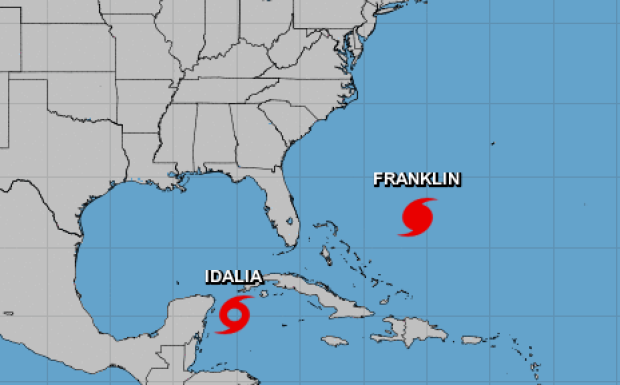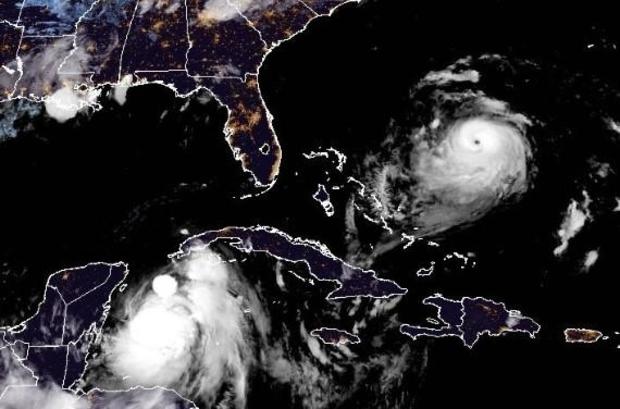As the Atlantic hurricane season ramps up, two formidable weather systems are escalating in intensity, casting a potential double threat to coastal regions. On Monday, Tropical Storm Idalia and Hurricane Franklin surged in power, raising concerns across the affected areas.

Tropical Storm Idalia, positioned just off the Cuban coastline, has shown signs of evolving into a major hurricane with the potential to make landfall along the southern United States. The National Hurricane Center (NHC) has been closely monitoring the storm’s trajectory, predicting that it could grow into a dangerous major hurricane over the northeastern Gulf of Mexico by early Wednesday. Florida’s Gulf coast, in particular, is on high alert as the storm gains strength. Florida Governor Ron DeSantis, during a Monday morning press conference, warned residents to brace themselves for significant impacts along the Gulf coast. President Joe Biden also took action, authorizing an emergency declaration for the state.
Hurricane Franklin, on the other hand, has already been classified as a Category 4 storm with sustained winds reaching 150 mph. This storm, having intensified overnight, marks the first major hurricane of the Atlantic season. While no coastal warnings or watches have been issued, Franklin is anticipated to generate life-threatening surf and rip currents along the U.S. East Coast. Swells emanating from Franklin have already begun to affect Bermuda.
Forecasters and experts have emphasized the potential for severe storm surges and destructive winds in the face of these intensifying storms. The NHC highlights the increasing likelihood of life-threatening conditions, urging individuals residing in susceptible regions to remain vigilant. Coastal areas, including Florida’s western coast, could face ocean water surging onshore, potentially leading to flooding and significant damage. Experts note that even a relatively moderate storm could trigger significant storm surges along these vulnerable coastlines.
Amid the uncertain forecasts, emergency preparations have been set into motion. Florida’s emergency management agency has declared a state of emergency across 33 counties, mobilizing resources and personnel for potential evacuation and recovery efforts. Governor DeSantis has advised residents to maintain at least half-full gas tanks in anticipation of potential evacuations. The National Guard has been activated, readying high-water vehicles and aircraft for rescue missions.
This season’s increased hurricane activity has been attributed to exceptionally warm ocean temperatures by the National Oceanic and Atmospheric Administration (NOAA). While the 2023 hurricane season is anticipated to peak in August and September, officials and residents alike remain vigilant as Tropical Storm Idalia and Hurricane Franklin continue their ominous march.
Disclaimer: The views, suggestions, and opinions expressed here are the sole responsibility of the experts. No Press Echo 360 journalist was involved in the writing and production of this article.

